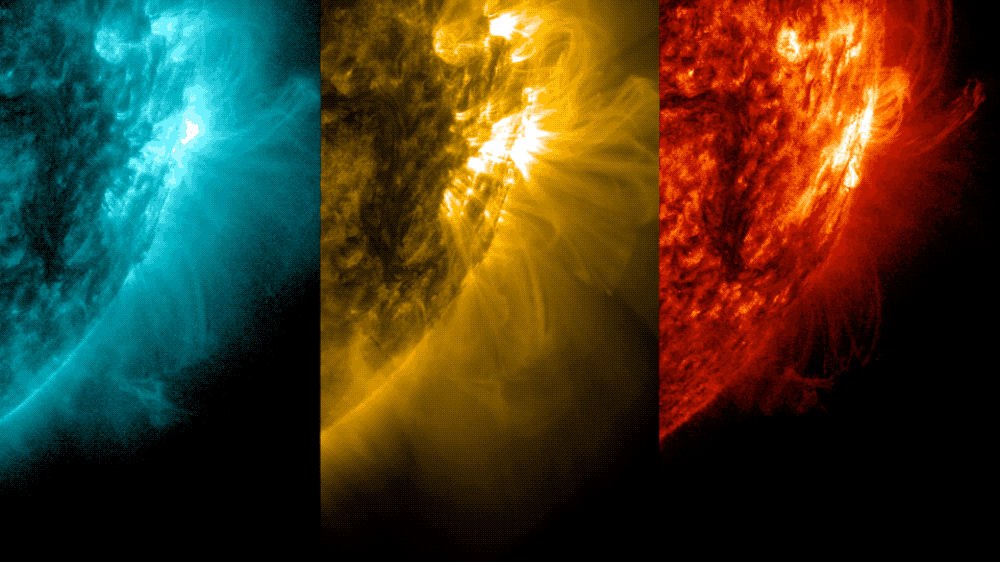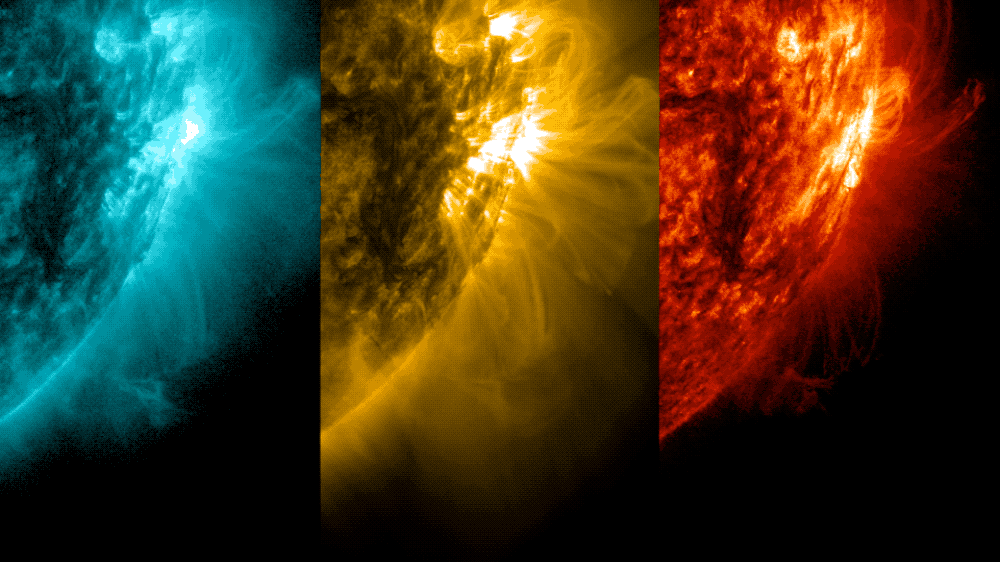Solar flares are powerful bursts of energy. Flares and solar eruptions can impact radio communications, electric power grids, navigation signals, and pose risks to spacecraft and astronauts.
Back on February 5th the sun unleashed a powerful X-class solar flare today, peaking at 8:10 a.m. (1310 GMT) and triggering shortwave radio blackouts across South America, Africa and the Southern Atlantic. Luckily for us, the sunspot moved beyond the sun’s limb, placing Earth outside of its direct firing line.
Then on the 16th a solar flare erupted from sunspot AR3576 — the same sunspot that put on a fiery show on Feb. 5 with an M-class flare and plasma eruption, as shown below
The Sun emitted a strong solar flare, peaking at 1:53 a.m. EST on Friday, Feb. 16, 2024. NASA’s Solar Dynamics Observatory, which watches the Sun constantly, captured an image of the event.
This flare is classified as an X2.5 flare. X-class denotes the most intense flares, while the number provides more information about its strength.
Solar flares such as this one are often accompanied by a Coronal Mass Ejection (CME), a large wave of plasma that erupts into space in a specific direction similar to a wave. These CMEs can cause disruptions on Earth if their trajectory lines up with the planet. CME impacts result in geomagnetic storms that can cause many problems for Earth-orbiting satellites, power grids, radio signals, and GPS satellites.
Aurora chasers love to hear a CME is on the way to collide with Earth as it means auroras, such as the Northern Lights and the Southern Lights, move closer to the equator due to the energized particles interacting with Earth’s upper atmosphere.
No, it didn’t cause the AT&T outage
While solar flares can affect communication systems, radar, and the Global Positioning System, based on the intensity of the eruption and associated phenomena, it is highly unlikely that these flares contributed to the widely reported cellular network outages that affected a handful of providers.

